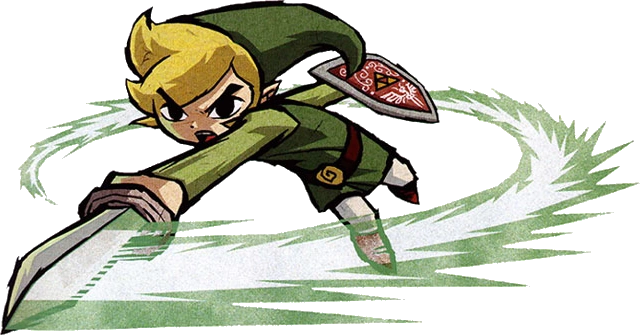Introduction
Throughout this unit to accompany our 30-second animation we have learned how to. record/implament sound and then transfer it into our animation with the hope of creating a more realistic and immersive experience the audience.
Beginning
Before I was to sample and create tacks using the various software I wanted my animation to be complete. I say this as I would have an idea of what times and where my sound would fit in my animation. I wanted to create a piece which was seamless with my animation. As well as this I wanted an overall theme to my animation. To achieve this Looked at some major blockbuster fils that implement a character or movie theme, And then I started to create my own.
God of war 4 main OST
From researching and taking notes from these themes I also noticed some unique sound techniques that I could implement. Examples may vary from the Diegetic or nondiegetic sound. Would my animation contain nondiegetic sound making the scene more dramatic however the characters within the world wouldn’t react to this music or would it be Diegetic where the music is playing within the scene?
MIddle.
During class, we were instructed to go and complete a spotting list which would contain various sound effects which would eventually be implemented in our animation. Unlike finding or creating the main theme for the animation this spotting list would contain a category of sound effects that I would use to make my animation more lifelike and immersive. Examples may be a recording of a group of people clapping representing a huge audience giving recognition to the protagonist or maybe chains rustling giving the impression that someone is locked up. Beforehand I was going to use my phone recorder to originally recording some of these samples however I was told by my teacher that there are much better alternatives. We were all introduced to the collages state of the art recording system. The difference between that and phone recorder is the fact that these recorders shown to us were able to muffle out any background sound. This enabled me to record any samples I required without any interference that would, therefore, hinder the clarity of my sound.
Now that I had the tools to create my sound effects all I did was actually go out and record them. The teacher allowed us to go out in groups to various parts of the college and record our sound. I and a group of friends went to the park to sample sounds for each of our animations. When it was my turn I had the recorder held in one hand and was ready to record. I instructed my friends to all clap repeatedly in unison creating the sound effect of a crowd cheering. I gave them little instructions as I wanted these cheers to be as lifelike as possible. For my second sound instead of infact manipulating and recording steel chains rustling, I was short on time so I, in fact, went on a website that sample sound effects. (Soundbible) and downloaded an mp3 file of chains rustling.
As I now had all my sound effects I decided to edit them myself using my own skill set and software. Usually I ould use logic as that’s the software that has been taught to us all through this course however as I was pressed for time and new I could not have edited my sounds at college I asked if it was ok to use Audition cc as I already had the software pre-installed on my laptop at home. (Audition cc is a is a digital audio workstation from Adobe Systems featuring both a multitrack, non-destructive mix/edit environment and a destructive-approach waveform editing view) When I was told that I could I went back home and started editing these effects on audition.
I started with the crowd cheering. I knew I wanted the audience to notice the sample as Iit helped with the overall scene however I new my man theme would also be playing over it. To compensate I Lowered the amplitude of my samples so the lower frequencies wouldn’t clash with my OST and overshadow my theme.
It was a simple task or importing the file into audition cc, and then editing the amplitude with the symbol shown above.
Now that my animation is complete I decided To implement my OSt that would consistently play through the full 30 seconds of my animation. MY animation is loosely based on a murder plot that I have created. To fit with the theme I instantly researched and played around with audition cc Meshing samples of various instruments until I found the right template. 
![]()
After Many different atempts, I came to the causality that I was overcomplicating. my post. I am a firm believer that simplicity is always more. Having that in mind now I decided to go for one instrument that would loop throughout my whole animation. I drew inspiration from my friend as he had a piano piece set. It had an sc He sent my this piece and I scaled it down to thirty seconds., this was so it could match perfectly with my animation without sounding out of place. My final product was a piece that would gradually rise n tension this is called ( cinematic tension). As the animation would play on the piano would play more frequently in smaller intervals. As well as this more keys would be played simultaneously. This overall effect created a sense of tension as now the piano was sounding incredibly out of control. keys were being pressed so fast and loud that there was a sense of danger and lack of control. I believe lack of control scares people as we always want to feel in control, it gives us a sense of sanctuary. Nearing the end of the animation when all the action had been revealed the piece seamlessly calmed down. This was the pinnacle for my animation as the variety of tension shown throughout the piece sculptured when my animation would start and when it would eventually climax. The audience would now know when tension would start to disperse as the music slowly dispersed.
Self-evaluation
To conclude, I am most pleased with my piece. I think I have created a theme and sound effects that mesh really well with my animation. Not only do they help mold and sculpture the animation but I also believe they help give another layer of emotion to the animation. Before sound was implemented my animation was almost lifeless. There was no clear beginning or ending, Nor was there any sense of realism between scenes. Now, however, everything has come to place and I believe the sound can give audience members something to enjoy. I do believe that I could improve upon some things that would have shaped my animation to an even higher level of success. Firstly time management. I felt I did not manage my time incredibly well and in doing that I was required to use a software that I was not familiar with instead of working on logic at the college where I would have the aid of my teacher if need. Secondly, I would have preferred to record all my sounds instead of some of them. If I had done that it would have given me a greater sense of accomplishment as I wouldn’t feel like I was taking someone else’s sound.









